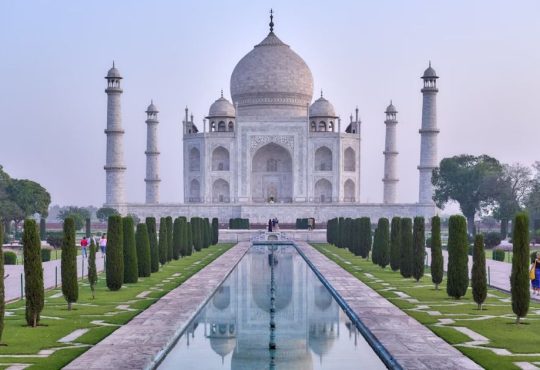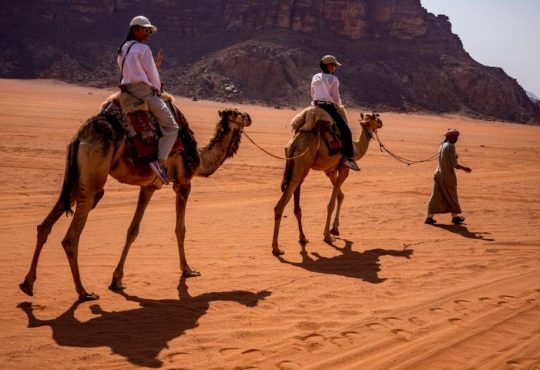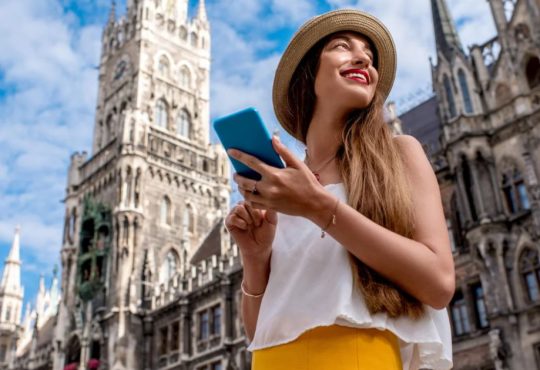In an age dominated by rapid technological advancements and social media influence, a growing movement is encouraging a shift toward a more mindful travel experience. Slow travel has gained traction as a thoughtful alternative to the hurried pace of conventional tourism. As interest in purposeful and sustainable travel increases, this approach stands out for its focus on immersive, meaningful engagement with destinations. The rise of slow travel reflects a broader desire for depth, offering distinct advantages and practical ways to incorporate this philosophy into upcoming journeys.
What is Slow Travel?
At its heart, slow travel is all about immersing yourself deeply in a destination instead of speeding through it. Rather than focusing on hitting all the must-see spots like conventional tourism often does, slow travel invites you to linger, taking time to soak in the local culture, engage with traditions, and appreciate the environment. It’s a way of connecting with the Place, its people, and its rhythm of life.
Key Aspects of Slow Travel:
- Immersion: Slow travel is not just about visiting a city or country; it’s about becoming part of it. Whether through local interactions, dining at neighbourhood spots, or learning a bit of the local language, it encourages complete immersion.
- Sustainability: Slow travel often goes hand-in-hand with sustainable tourism practices. Travelers can reduce their carbon footprint by spending more time in one Place and using slower forms of transportation, such as trains or bicycles.
- Minimalism: It is at the heart of slow travel. It encourages focusing on a few meaningful experiences rather than covering everything. The emphasis shifts from rushing through a destination to savouring each moment with intention and presence.
Fundamentally, slow travel opposes the typical “checklist” style of tourism, where travelers rush from one landmark to the next. Instead, it prioritizes depth over quantity, placing equal importance on the journey and the moments it offers.
Why is Slow Travel Gaining Popularity?
There are various reasons why slow travel is becoming a trending topic in the travel world. As travellers become more conscious of environmental impacts, seek deeper connections, and crave a break from the noise of everyday life, slow travel presents an appealing alternative to fast-paced tourism.
1. A Desire for Deeper Connections
Amid the rise of Instagram-driven travel and fast-paced itineraries, many travelers feel detached from their journeys. In contrast, slow travel promotes deeper connections with destinations by encouraging interaction with local communities, exploration of regional cuisine, and time for reflection, leading to more fulfilling and authentic experiences. Rather than just visiting a famous monument for a few hours, slow travellers might explore its surrounding neighbourhood, take a guided tour, or even learn about the history through conversations with locals. These personal connections create a lasting bond and enhance the overall journey.
2. Environmental Consciousness
As travellers become more mindful of their actions’ environmental impact, many are moving away from high-carbon modes of travel like aeroplanes in favour of greener options such as trains or buses. These modes of transport typically have a lower carbon footprint, especially when you’re not rushing from one destination to the next.
Moreover, slow travel allows longer stays in one Place, which can reduce the overall number of flights and transportation used throughout the trip, leading to decreased carbon emissions.
3. Mental Well-being and Mindfulness
We’re all familiar with the hustle and bustle of everyday life. Whether it’s work, family, or just the pressure of modern living, our minds are constantly in motion. Slow travel offers an escape from this chaos, allowing travellers to unwind and rediscover the joy of simply being present. With time to slow down, focus on the moment, and breathe in the surroundings, you can experience genuine relaxation and rejuvenation.
Slow travel reflects the principles of mindfulness, encouraging full engagement with one experience at a time while fostering awareness of the environment. Rather than aiming to check off every activity, it promotes a deeper appreciation of the travel experience as it unfolds.
The Benefits of Slow Travel
As more and more people explore the world through the lens of slow travel, it’s clear that the benefits go far beyond simply enjoying the sights. Here’s why slow travel is gaining enthusiastic support from experienced travellers and those just discovering its joys.
1. Better Local Experiences
The faster you travel, the more you miss. Slow travel lets you focus on the small things—the hidden café down an alleyway, a lively market tucked away from the crowds, or a local festival not listed in the guidebooks. By slowing down, you’ll see a different side of a destination that’s authentic and deeply tied to the culture.
When you allow yourself time to linger in a destination, you also gain access to local experiences that others miss. This could include attending cooking classes, learning a traditional craft, or connecting with artisans, farmers, and small business owners who share their stories and knowledge.
2. Reduced Stress
While planning an itinerary full of activities can be exciting, it can also be incredibly stressful. Trying to fit in every attraction or experience within a short period often leaves little room for relaxation. Slow travel removes that pressure. By staying longer in one Place and savouring the experience, you can avoid the overwhelming rush of “doing it all” and focus instead on the quality of your time spent.
3. Financial Benefits
Travelling at a slower pace saves you money. Shorter stays at multiple destinations can quickly increase when you factor in transport, accommodations, and meals. By spending more time in one location, you can find ways to save on accommodations (such as renting an apartment or staying with a local family) and take advantage of longer-term discounts for local activities and attractions.
Additionally, with more time to explore a destination, you can find cheaper and more rewarding off-the-beaten-path experiences.
4. Sustainable Travel Choices
Slow travel naturally encourages sustainable practices. When you choose to stay in one Place for a longer time, you reduce the frequency of flights and other modes of transportation. Additionally, by spending time with locals and shopping at smaller markets, you’re supporting local businesses, many of which are more eco-conscious than large corporate establishments.
5. Authentic Relationships with Locals
One of the highlights of slow travel is the ability to form genuine relationships with the people in the places you visit. When you spend extended time in a community, you become more than just a tourist—you become part of the area’s fabric. Whether it’s striking up conversations at the local bakery or being invited to a local celebration, slow travel fosters authentic interactions that you won’t experience on a whirlwind trip.
How to Try Slow Travel
If you’re eager to dive into the world of slow travel but aren’t sure where to start, here are some tips to help you embrace this style of travel on your next adventure.
1. Stay Longer in One Place
The cornerstone of slow travel is staying in a location for extended periods. While it can be tempting to hop from city to city, waiting for a week or more in a single destination allows you to experience it more fully. This could mean exploring a town, village, or countryside region.
2. Slow Down Your Transportation Choices
While aeroplanes are often the quickest mode of travel, they also contribute significantly to your carbon footprint. Instead of flying between cities, consider travelling by train, bus, or bike. These modes of transport have a low expected environmental impact and give you a more scenic and intimate view of the landscape. Plus, travelling by train or bus can offer you more opportunities to interact with locals.
3. Engage with the Local Culture
Instead of just visiting a few tourist attractions, dive into the heart of the local culture. Try to learn a few words of the local language, eat at family-run restaurants, and attend local festivals. Participate in activities beyond typical tourist experiences, like cooking classes, farm stays, or volunteer work. The more time you spend engaging with the locals, the deeper your connection to the destination will be.
4. Disconnect from Technology
Slow travel is also about disconnecting from the digital world. Try to limit your time on your phone or social media. Instead, focus on being present, soaking in your destination’s sights, sounds, and smells. This break from technology will help you truly immerse yourself in the experience.
5. Travel with Purpose
Think about your purpose for traveling. Is it to relax, recharge, learn something new, or support a community or cause? Aligning your trip with a deeper purpose will make the experience more fulfilling and meaningful, a key principle of slow travel.
Embracing the Journey: The Value of Slow Travel
In a world driven by speed and productivity, slow travel presents a meaningful alternative, promoting a more intentional approach to exploration. This travel philosophy enhances cultural appreciation through immersive experiences, sustainable travel choices, and deeper engagement with local communities while supporting a more mindful and environmentally conscious way of discovering new places. If you’ve ever felt rushed or disconnected during your travels, slow travel is an approach that allows you to experience the essence of a place truly. So, next time you book a trip, consider slowing down—and see how the journey becomes just as rewarding as the destination.





